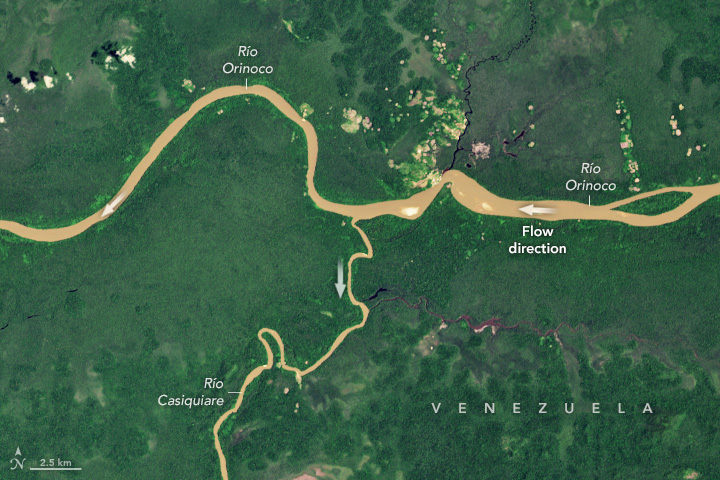When Rivers Take a Weird Turn: Insights from South America’s Natural Bifurcations

In June 2025, NASA’s Landsat‑9 captured a striking scene: two rivers in tropical South America diverging instead of converging—a rare hydrologic phenomenon that challenges conventional river behavior wodnesprawy.pl+10earthobservatory.nasa.gov+10landsat.visibleearth.nasa.gov+10.
Unusual Natural Examples
- Casiquiare Canal (Venezuela): A natural distributary of the Orinoco River, redirecting part of its flow into the Rio Negro and Amazon—an enduring bifurcation formed by subtle terrain and floodwater dynamics newsweek.com+7enn.com+7en.wikipedia.org+7.
- Wayambo River (Suriname): This river splits between the Nickerie and Coppename basins, influenced by seasonal rains and human-managed locks for irrigation livescience.com+2geographyrealm.com+2en.wikipedia.org+2.
Why It Matters
These phenomena illuminate how small gradients and flood dynamics shape sediment flow, ecosystem health, and downstream water quality. Infrastructure interventions—even locks or levees—can significantly alter a river’s path and its environmental effects.
Ecotox Environmental Services: Your Partner in Waterway Resilience
Even if your projects aren’t in remote rainforests, similar hydrologic principles apply. Ecotox offers:
- Water Quality Monitoring: We capture real-time data during flood events to track sediment, pollutant loads, and flow changes.
- Environmental Impact Assessments (EIAs): Essential for any infrastructure—like levees, channels, or locks—to predict ecological and hydrodynamic effects.
- Sediment & Hydrodynamic Modelling: We simulate how modifications to flow regimes might impact erosion, nutrient transport, and habitat downstream.
By applying lessons from the world’s most curious river systems, Ecotox helps you design with environmental foresight, protecting communities and ecosystems in the face of change.

